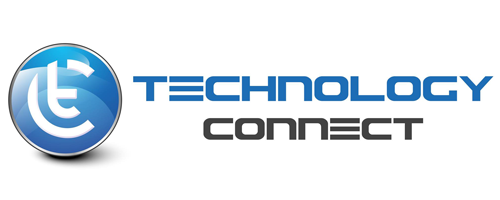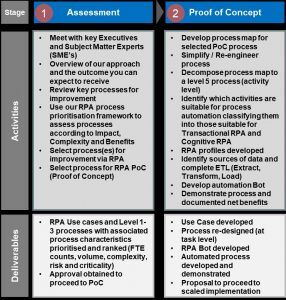

How To Implement Your Robotic Process Automation Proof Of Concept in 2 Weeks
By now, most executives have heard the scare stories of how the competition’s robots are going to take over your customers and market because this is so much faster, better and cheaper. However, the reality is somewhat more nuanced, with many organisations still not sure or very advanced in the area of robotic process automation (RPA). If you, or your organisation, is still wondering whether RPA would be valuable for you, then hopefully this short read will convince you that with a very limited investment in time and resources, you can satisfy yourself that the hype is real and you need to accelerate your use of RPA.
Before we get into how to determine whether RPA is a worthwhile investment, let us make sure we share an understanding of what RPA is. We define RPA as ‘the application of technology that allows employees in a company to configure computer software or a “robot” that sits on top of existing systems and interpret existing applications to perform tasks normally performed by a human, using rule-based processes.’
You’re probably already aware of the potential benefits of using RPA, otherwise you would not bother reading this in the first place. But, just to summarise some of the RPA benefits:
- Cost effective automation of high volume and rule-based tasks, replacing manual processes with “robots”
- Operate on a 24 x 7 basis at about one-third of the cost of off-shore operators or one-ninth the cost of an on-shore operator*
- Provides strong governance and auditability enables detailed and real-time compliance traceability.
- Can be implemented with relative ease within a complex IT landscape
- Enables rapid incremental benefits and standardisation of processes
* Source: Willcocks & Lacity: Service Automation – Robots and the Future of Works (2016)
So, if you like the above, and as illustrated below in Figure 1, we have developed an approach to demonstrate the value of RPA within 2 weeks so that you can get started on this journey as soon as possible to catch up with your competition.
Figure 1: How to develop an RPA PoC within 2 weeks
Source: Technology Connect
The first stage of our approach involves an assessment of processes in an area where RPA is likely to be a profit accelerator, e.g. claims processing in an insurance company or the quote to invoice process in manufacturing. This stage typically takes 1-2 days, depending on the availability of key people and information. At the end of the assessment stage, we will have selected a process to use as our RPA Proof of Concept (PoC).
The second stage involves building and demonstrating the RPA PoC. First up, the PoC process needs to be defined down to the task level as this is the level where automation takes place. This isn’t really hard to do. With the help of a subject matter expert this can be done by simply observing how things are currently done for documentation purposes. As we observe this current process execution, we note the time and resource(s) it takes to perform all of the activities. Once this is done, we can now evaluate and select the activity steps where automation would have the biggest impact on time and resources (and usually other important benefits such as error reduction, compliance etc.) We’re now ready to configure our RPA tool (our Bot) to perform these tasks, and ultimately we execute the automated process. As we execute the process we observe the target state time and resource consumption, so that we can compare these results with the current state. The comparison is important as this is our “proof” that the concept of RPA has the opportunity to significantly and rapidly drive new value to the organisation.
All in all, the assessment and proof of concept stages take 1-2 weeks, depending on the complexity of the process chosen for the POC. In most organisations, this type of investment is very small compared to the potential benefits of RPA and therefore a “no brainer” for most executives wishing to determine if RPA has the potential to rapidly make processes better, faster and cheaper.
If interested in our Robotic Process Automation services for your organisation, please contact us on info@technologyconnect.com.au
Tom is the founder and Managing Director of Technology Connect. He has 15 years of executive management experience in large scale digital transformations and maximising value from emerging and disruptive technology investments. He has advised senior executives in Financial Services (Banking and Insurance), Media & Entertainment, Construction & Engineering, Technology Services and Government (Federal and State) in Australia, New Zealand, Asia and Europe.
Copyright © 2018 Technology Connect. All rights reserved.

